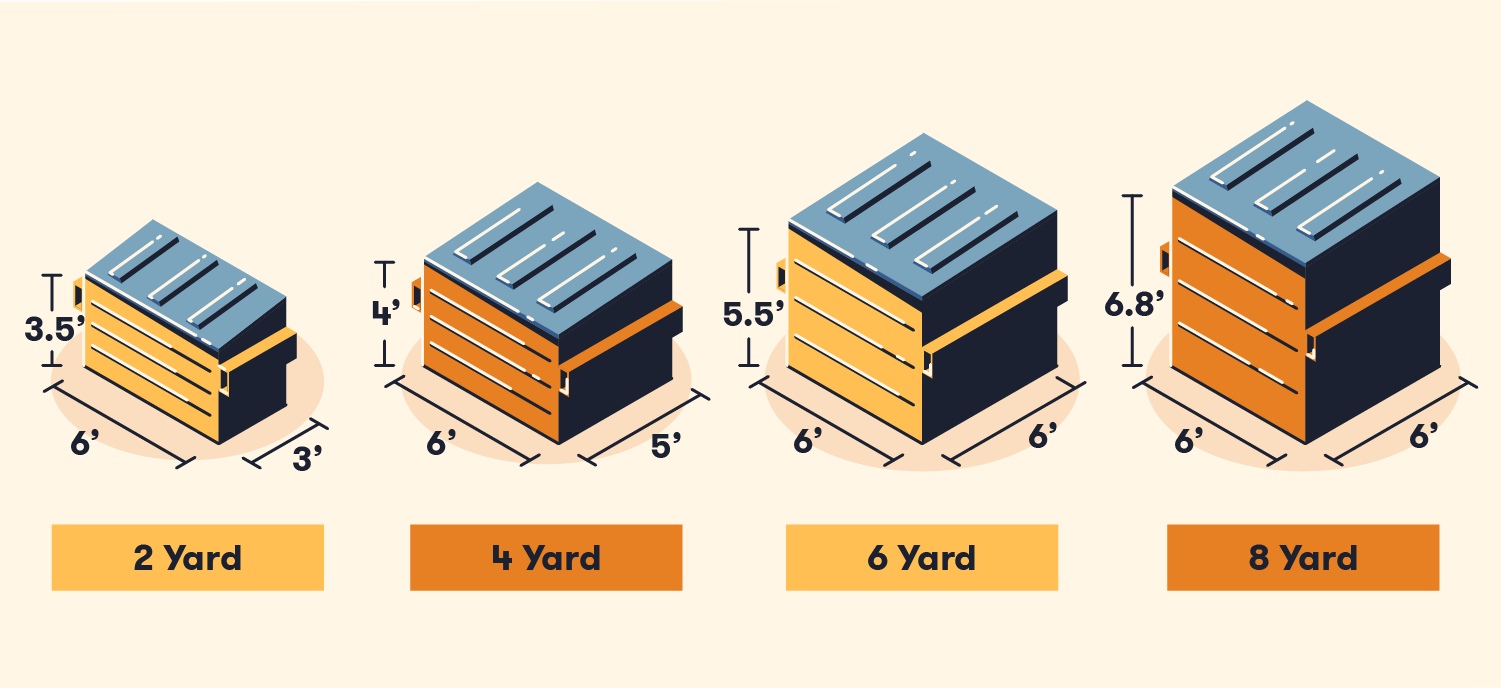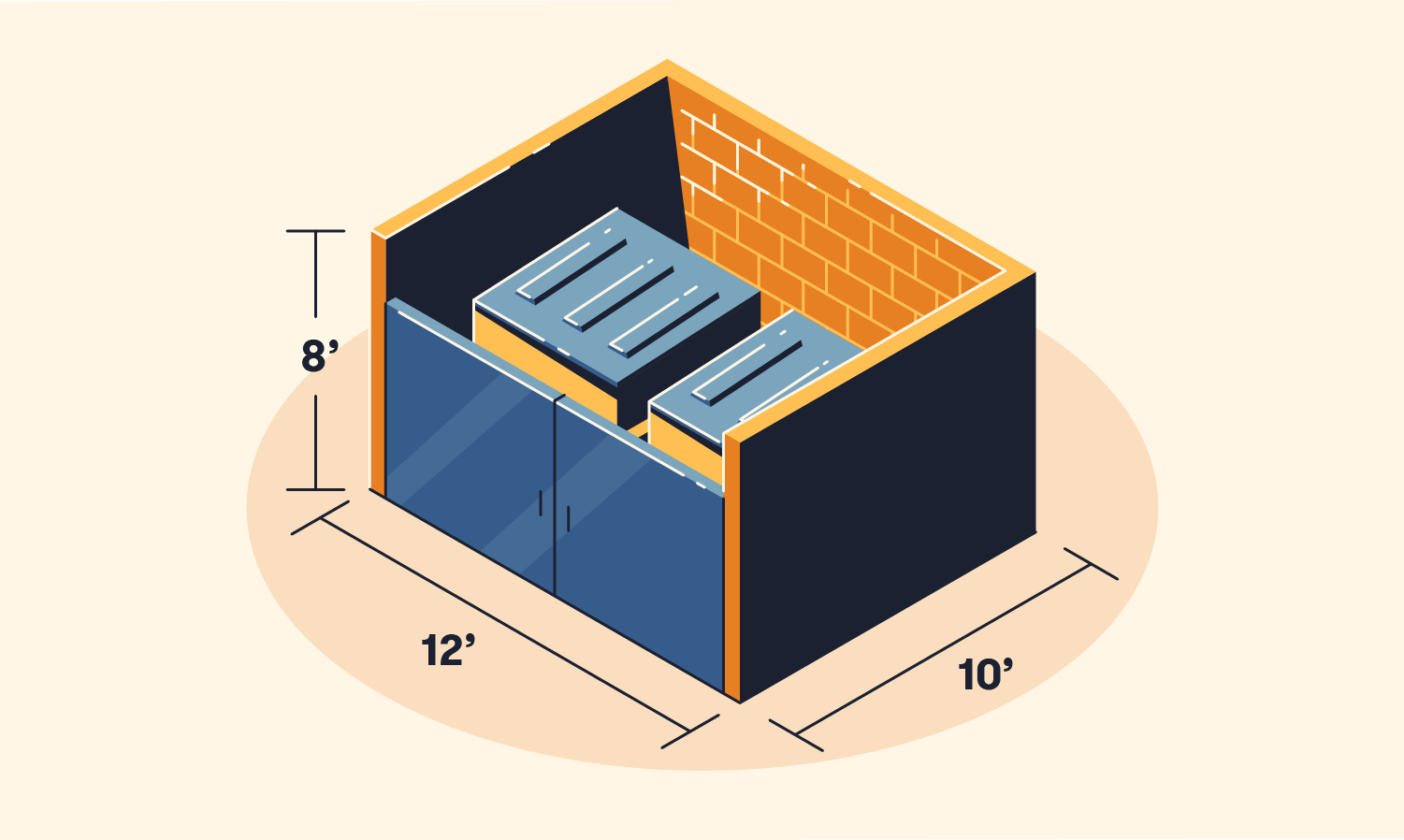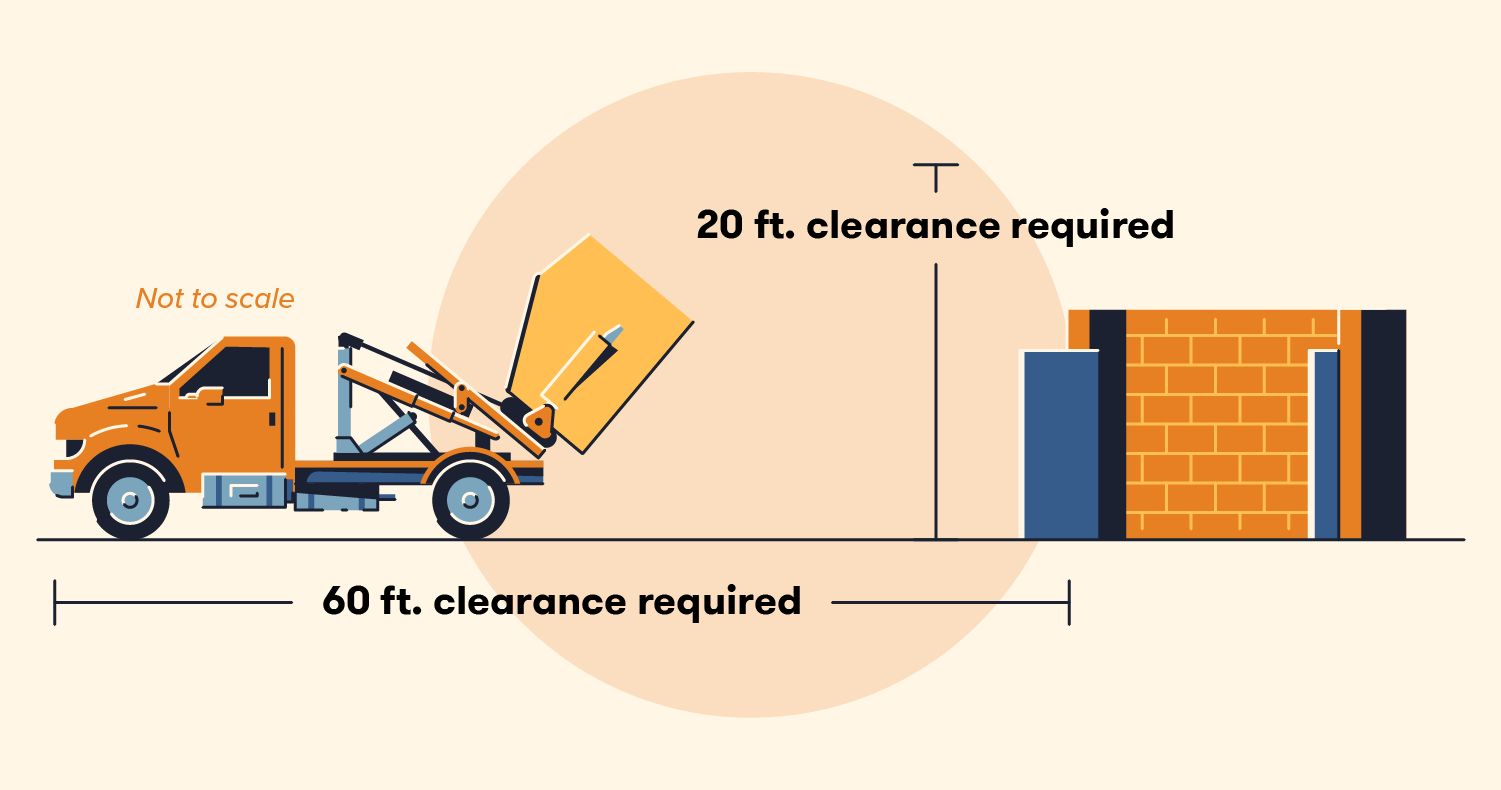If you need a residential or commercial dumpster but want to keep it out of sight, dumpster enclosures are a great option. They are inexpensive to build and come in multiple sizes and styles. Before you start building, however, you’ll need to choose the right dumpster enclosure dimensions for your property.
A dumpster enclosure is a fence-like structure designed to conceal a dumpster, prevent illegal dumping and keep animals out of your trash. These structures are typically made from wood, concrete, bricks or chain-link, and they often have lockable doors that swing out to give trucks and people access to the dumpster.
There are multiple factors to consider when adding a dumpster enclosure to your property. To help simplify the process, we’ll walk through the most common sizes and dimensions and provide tips for building your own dumpster enclosure.
Explore All Dumpsters
Average Commercial Dumpster Size

Before constructing an enclosure, you should select a dumpster size that easily fits on your property and can handle the amount of waste you produce each week. The most common commercial dumpsters come in 2, 4, 6 and 8 cubic yard options, and they typically use the following dimensions:
- 2 Yard: 3 ft. x 6 ft. x 3.5 ft.
- 4 Yard: 5 ft. x 6 ft. x 4 ft.
- 6 Yard: 6 ft. x 6 ft. x 5 ft.
- 8 Yard: 6 ft. x 6 ft. x 6.8 ft.
How Big Should a Dumpster Enclosure Be?

Standard dumpster enclosures usually must be at least 10 feet long, 12 feet wide and 8 feet tall for a single dumpster. They also must leave at least 2 feet of room between the dumpster and the side of the enclosure. However, dumpster enclosures can come in multiple sizes, and some cities require different minimum dimensions than others. If you’re not sure how big your enclosure should be, consider the following factors to help you decide.
Garbage Truck Clearance
If you want the city to empty your dumpster on garbage day, your enclosure should leave plenty of room for the truck to maneuver. That means leaving the area clear of debris, avoiding areas that have low-hanging branches or wires and ensuring that the truck won’t block traffic during pickup.
Dumpster Delivery Truck
If you plan to place a rental dumpster in an enclosure, you’ll need to leave room for the delivery truck to drop it off and pick it up. Most companies recommend allowing 60 feet of straight space for the truck to approach and 20 to 30 feet of overhead clearance for large construction dumpsters.
If you rent a small commercial or residential dumpster, the company may use a smaller delivery truck that requires less space. Contact your local dumpster rental company ahead of time to learn how much space they require for their delivery trucks.

Type of Dumpster
The type of dumpster you need could impact the layout of your enclosure and how large it needs to be.
Front-load dumpsters remain on-site and are commonly used by businesses, schools, apartment complexes and other facilities for regular trash pickup. Standard enclosure dimensions are calculated with front-load dumpsters in mind, so you shouldn’t have to make any modifications to your enclosure to accommodate them.
Roll-off dumpsters are typically larger than front-load dumpsters and are used for temporary projects like construction, demolition and home renovation. Because delivery trucks remove these dumpsters at the end of the project, a dumpster enclosure isn’t always practical. However, you can use a large enclosure as long as the delivery truck can easily access it.
Number of Dumpsters
If you have more than one dumpster, you’ll need to add space to your enclosure. Enclosures generally need an extra 10 feet of width for each additional dumpster, and the opening must be wide enough to give trucks access to each dumpster.
Location
The city you live in will impact the required minimum dimensions for your dumpster enclosure. Regulations may vary by city, so you’ll need to contact your local government agency or trash collection service for your town’s requirements.
Do I Need a Dumpster Pad?
A dumpster pad is a flat, concrete surface inside the enclosure that protects the ground under the dumpster. While it isn’t required to have one, dumpsters can cause surfaces to become cracked, stained or distorted without a pad underneath.
If your dumpster enclosure is permanent or built on a soft, uneven surface, you should consider adding a pad to protect the ground underneath it. However, you may not need one if you plan to set up a temporary enclosure on concrete, asphalt or a similar flat surface. While commercial and residential dumpsters typically stay in one place, temporary roll-off dumpsters are safe to place on driveways or construction sites without a pad.
If you choose to add a dumpster pad, it should be large enough to cover the ground inside the enclosure. It also needs to be made of reinforced concrete that’s at least 6 inches thick to prevent cracking.
Tips for Building and Maintaining Your Dumpster Enclosure
There are a few different routes you can take when building a dumpster enclosure. Once you know the correct dimensions, consider following these tips to build an enclosure that works best for your property:
- Choose the right materials: Dumpster enclosures can be made out of a variety of materials, including wood, concrete, chain-link and brick. Lighter materials are best for easy access, while heavier materials are better at keeping unwanted intruders out.
- Build away from high-traffic areas: Placing dumpsters away from high-traffic areas makes pickup easier and keeps unsightly waste out of view.
- Build a wide gate: If you choose to add a gate to your enclosure rather than leave it open, you’ll need to ensure that it’s wide enough to accommodate delivery and garbage trucks. Gates should be at least 11 feet wide and be able to swing out at 90 degrees or more.
- Consider your budget: If you have a tight budget, it’s best to opt for low-cost materials like wood or chain-link. Ensuring that you follow your city’s size and placement requirements will also help you avoid extra fines or penalties.
- Add an apron: An apron that extends a few feet in front of the enclosure can help prevent cracks and accidents during delivery.
Dumpster enclosures are a helpful addition to properties that keep one or more dumpsters on-site. Next time you buy or rent a dumpster, use the tips above to help you choose the correct dumpster enclosure dimensions for your property.
Explore All Dumpsters
